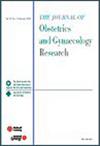Clinical characteristics of patients with mesh or sling exposure: A single-center retrospective study
Abstract
Aim
This study aims to (1) summarize the chief complaints related to mesh exposure, offering insights for clinical identification; (2) detail the clinical characteristics of mesh exposure using the category-time-section (CTS) system; and (3) describe the management and outcomes of mesh exposure to offer evidence for guidance and share opinions for other surgeons.
Methods
This is a single-center retrospective study. We analyzed data of mesh or sling exposure patients clinically collected by our hospital from January 2008 to January 2020. Analysis was performed on the basic information, primary operation for pelvic organ prolapse or stress urinary incontinence, chief complaint, CTS classification, treatment, and outcome for mesh or sling exposure.
Results
A total of 71 women were included in this study, whose median age was 56 years. Twenty-five of those patients (35.21%) underwent transvaginal mesh (TVM) for POP. The most common chief complaint was vaginal bleeding (40/71, 56.34%). Category 2 (49.30%) and category 3 (46.48%) were the predominant CTS categories. The majority of those patients were identified to have mesh exposures in 12 months post-surgery. Thirty-nine patients (54.93%) underwent multiple procedures to address mesh or sling exposure.
Conclusion
Vaginal bleeding and pain can be indicative symptoms for mesh exposure. Mesh or sling exposure initiates most frequently in 12 months post-surgery and localizes predominantly at the vaginal suture area. Non-surgical approaches can be adopted as initial preservative treatment for patients who are asymptomatic and have exposure smaller than 1 cm2.




 求助内容:
求助内容: 应助结果提醒方式:
应助结果提醒方式:


